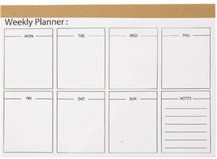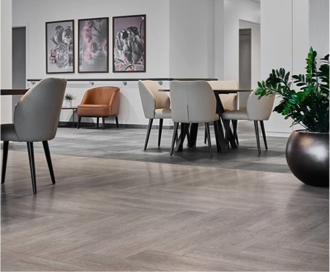|
Compensatory Strategies after brain injury ACC and Laura Fergusson Trust These are simply strategies that you may need to use, to compensate for the difficulties you are having since your injury. For example: You can never remember appointments anymore, so you now keep a diary with you at all times. The diary is a memory strategy and helps you function on a day to day basis. Often people find the idea of a strategy difficult to grasp and will not want to use one, because they functioned perfectly well without it prior to their injury however many difficulties following a brain injury do not get better or go away. At this point, if you want to be successful at home/socially or at work then you will need to find a way to “overcome” the problem.  Some "tried and true" strategies Managing Fatigue
Managing Attention and Concentration
Managing Processing of Information
 - Dictaphone to record lengthy/complex information so you can listen to a number of times - Answering Machine to record phone messages rather than trying to write them down and listen - Taking notes - Asking for repetition/clarifications - Repeating information back to people - Breaking information into chunks - Paraphrasing/summarising written information - Asking people to slow down - Getting rid of distractions (e.g. going to a quiet place if you are having to process complicated instructions) Managing Memory
If you get into a routine things become habit – the pressure is taken off your brain to remember what you are supposed to be doing. 
Managing Executive Functioning
- alarm/timer to go off when you need to do something - a daily plan will increase your chances of getting things done – when you see it written - specific times for planning and organising - prompts/alarms to get you up - feedback and prompts from others can also be a valuable strategy initially until you find a way of managing your difficulties independently Managing Social Skills/Behaviour
All strategies are quite simple and mostly common sense. Often after an injury your brain is too tired to think of ways around things, even if they seem simple. These are all just ideas. Your rehabilitation team will help you identify the need for strategies and assist you to find the ones that work for you. Reference: ACC Laura Fergusson Trust Best flooring for a senior living community from Aged Care New Zealand Issue 2 2021  Choosing floor coverings for care facilities can be challenging. It’s about more than just function and performance; it’s about creating an ambience that helps residents feel comfortable and relaxed. The choice of floor covering should also help to improve infection control and create hygienic environments. At the same time, it’s essential that finishes stand up to the daily demands of a live, operating care home. Though the abilities of the people living in senior communities are varied, the flooring requirements are the same. No matter how able-bodied residents are, safety and accessibility are the top concerns. Safety must encompass accommodations for visual impairment, slip hazards, transition hazards (between material), and flammability. Durability, ease of maintenance, and sustainability are significant considerations as well. When it comes to choosing among flooring recommendations for the elderly, mistakes made in material selection or flooring installation can be dangerous – even deadly. Thus, the best flooring for a senior living community is one that takes into account the specific needs of it’s residents Seven senior flooring options With great influence from the hospitality industry senior flooring options have dramatically changed. Many flooring products are being installed to accommodate for various spaces. The challenge of evaluating senior flooring options is selecting a material with a homey feel that is functional, safe and durable since carts and wheelchairs can damage floor coverings over time Luxury vinyl tile Stunning floors can be designed with luxury vinyl tile (LVT) and the use of water jet cutting technology. Along with modular products, there are numerous vinyl plank patterns that feature a wood-look. Some even have bevelled edges to enhance the plank effect. The advantages these products offer include high resiliency, high point loads to resist indentation, more sound absorption that vinyl composite tile (VCT) or porcelain tile, added comfort and super easy maintenance. Vinyl tiles easily pattern and can be water just cut prior to installation for more intricate patterns. And they are often manufacturing with antimicrobial additives. Rubber Natural rubber tiles or rolled rubber flooring is another option for senior living communities. Rubber is a rapidly renewable resource, making it very durable and a good shock and sound absorber. Available in in many colours, rubber has a natural finish that gets better over time. It is naturally antibacterial and requires very low maintenance. And like LVT, it can be pre-cut in intricate patterns using a water-jet technique. Carpet Carpeting still remains a dominant material in flooring for senior living communities. Healthcare carpet installers say the broadloom carpet is a cost effective option for offices and areas where replacement and heavy traffic is not such a big concern. Carpet tile has made it’s entry in non-critical care spaces. It’s fast becoming a favourite for its ease of installation and replacement, as well as the variety of patterns and colours. Plus, it’s a natural acoustical conditioner, promoting speech privacy in large spaces. Cork Installers also recommend cork flooring. Like carpet, cork is shock absorbent and comfortable to stand on for long periods of time. Cork flooring has a 40-year life span when it is maintained properly. Plus, cork is all natural, biodegradable and renewable. Terrazzo Believe it or not, terrazzo flooring – once used extensively in healthcare facilities – is finding its way back into common spaces in senior living communities. This is primarily because it is so low maintenance. Simply sweep and mop occasionally: that’s it! You’ve done the maintenance needed to keep up a terrazzo floor. Linoleum Available in both tile sand rolled goods, linoleum can be water jet cut to created intricate patterns. It’s naturally antibacterial and antistatic, as well as durable, flexible, and sound absorptive. Padded linoleum behaves very similarly to padded vinyl but it’s not quite as stain resistant. Despite this, linoleum is still easy to clean, maintain, and disinfect. Dual-stiffness flooring Researchers reviewing falls that occurred in a nursing home form 2008 to 2010 discovered that 82 falls occurred on dual stiffness flooring (DSF) which is flooring that incorporates a layer of compressible material meant to cushion falls. No resident who fell on the DSF experienced a fracture. Of the 85 falls on regular flooring there were two fractures. “The fracture rate of 2.4 percent of falls on the regular floor is consistent with previous reports in the literature, whereas a zero percent rate found on the DSF floor is a clinically significant improvement,” the researchers wrote. Choosing the best flooring for a senior living community is essential to creating a safe and easy to manage environment. The options outlined in this article provide some great flooring recommendations for the elderly but ultimately the right flooring choice depends on the unique needs of a senior living community’s residents. Ref: Aged Care New Zealand Issue 2 2021 |
AuthorShonagh O'Hagan Archives
July 2024
|

 RSS Feed
RSS Feed